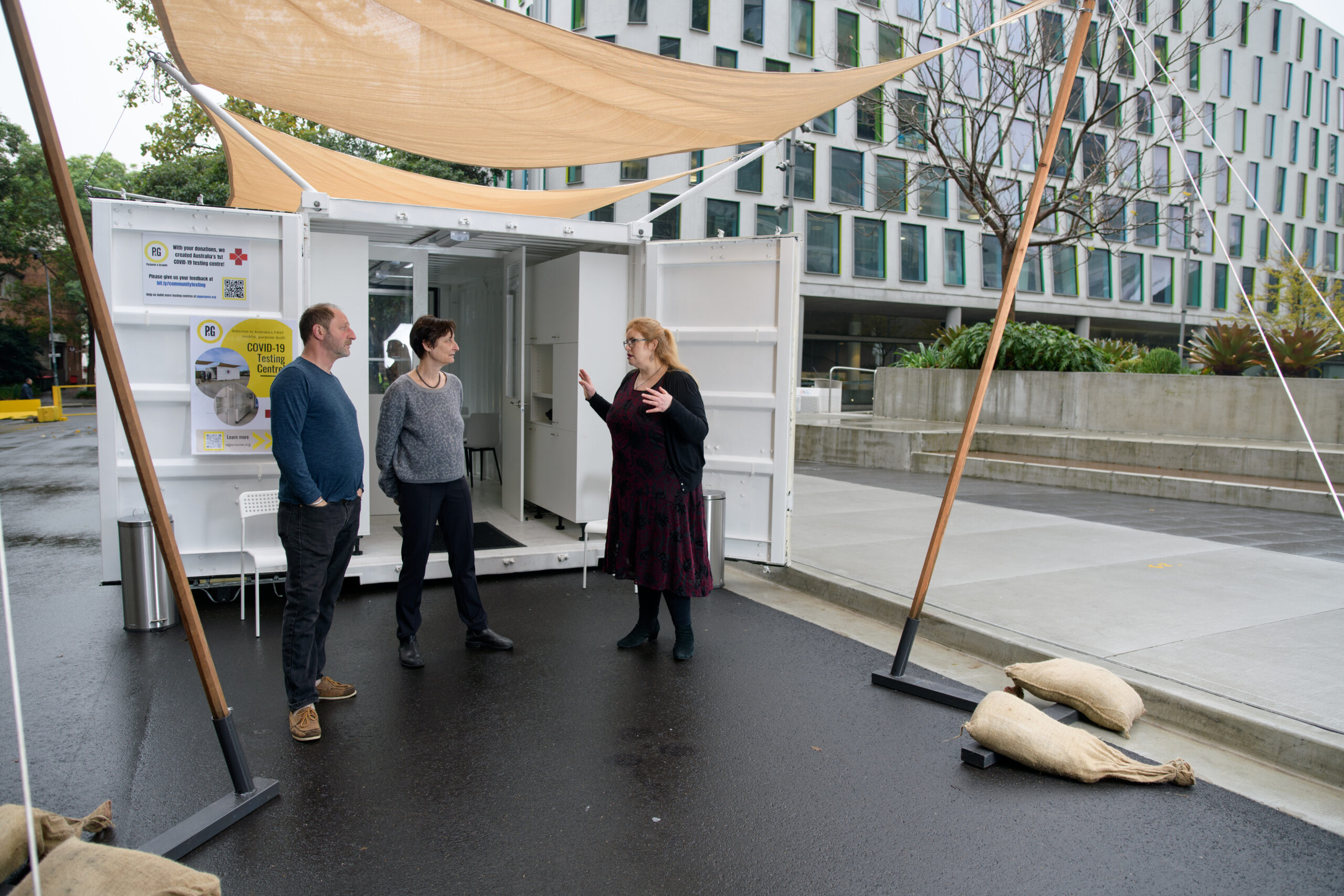
On This Page
Imagine a post-Covid-19 world where mobile testing stations are available to even the most vulnerable communities in the poorest countries. Imagine a coordinated, benevolent health response system that allows people in every part of the world to safely resume daily activities. That may sound like a distant utopia given the current suffering of millions of people, businesses, and the global economy. However, innovation abounds, and at P&G Purpose, this utopian vision is quickly shaping into a reality—a reality that fits inside of a shipping container. P&G Purpose has partnered with Robert Barnstone—a Harvard-educated, Sydney-based architect—to create purpose-built, drive-through testing stations.
Testing has long been a staple at the helm of public health officials’ rapid response to disease outbreaks. The MERS, SARS, and Ebola epidemics proved that contact-tracing in conjunction with widespread testing can drastically reduce the spread of these diseases. An article from NPR reported that “Public health leaders widely agree that communities need to ramp up their capacity to test, trace and isolate, in order to safely ease up on social distancing measures and allow people to get back to work.” With countries around the world in lockdown, strapped for cash, and reeling from slow and poorly prepared response efforts, testing orchestration and facilities need to be accessible, equitable, and safe.
Let’s face it: The coronavirus has hit the poor and marginalized populations at disproportionate rates, and if there is one mantra that resonates here, it’s we’re all in this together. From the new superheroes on the frontlines in hospitals and grocery stores to individuals who are incarcerated or transported from one detention center to another, without access to testing and contact tracing, the communities in which they reside will suffer dire consequences.
In National Geographic’s interview with Nicholas Grassly, an infectious disease epidemiologist who works at Imperial College, he states that ‘“We found that testing was most effective when targeting high-risk groups, like health-care workers.’ Health-care workers account for as many as 20 percent of all cases in hard-hit places such as Spain. A recent report from the MRC Center [for Global Infectious Disease Analysis] estimates that weekly screening of health-care workers and other at-risk groups could reduce their transmission rates by a third.” In yet another report from the CDC, testing was again referred to as critical when curbing transmission of this deadly virus: “Prompt identification of persons with COVID-19 and consistent application of prevention measures within correctional and detention facilities are critical to protecting incarcerated or detained persons, staff members, and the communities to which they return.”
It’s no surprise and no less disheartening that those on the frontlines and in overcrowded and unsanitary conditions are at a higher risk of contracting and transmitting COVID-19. So, too, are individuals with preexisting conditions such as congestive heart disease, diabetes, and chronic obstructive pulmonary disease, which disproportionately affect the African-American population in the United States. So where does this leave those who have little access to clean water or sufficient health care and for whom social distancing is next to impossible?
As you might’ve guessed, refugees and asylum seekers in developing countries are in an extremely poor position to fight the threat of COVID-19. For example, living in camps of more than 900,000 within a space of approximately 10.7 square meters (or 115 square feet) per person, Rohingya refugees in Bangladesh are at an even greater risk of contracting and spreading the disease. An absence of quality health care and testing coupled with a plethora of rickety shelters amid squalid conditions makes this a prime breeding ground for COVID-19.
“Testing and services must be provided to everyone within a geographic region, regardless of whether an individual is a national or a refugee. In addition to the issues of inequity, differentiating makes no public sense,” said Paul Spiegel, Director of the Johns Hopkins Center for Humanitarian Health. If ever there were a moment in history with the power to unify humanity and change perceptions of “otherness” to “oneness,” this would be it. No prejudice. No judgment. No divisiveness. Instead, a coordinated effort to heal and prevent.
Testing: A solution
At P&G Purpose, we are creating these very testing solutions. Australia’s first purpose-built, drive-through testing station for COVID-19 is made with low-cost materials, is easy to assemble, and can be deployed anywhere. Our design is safer for health care workers and comes complete with three zones: (1) the deck where health care professionals will be stationed outside of the container to manage traffic, (2) the computer station and laboratory where professionals will be able to collect and process data in a secure indoor area, and (3) the external side where PPE is changed and discarded and clean water is stored.
There are many modern-day structures built from repurposed materials. Who knew that a rather unassuming shipping container could transform into a rapidly deployable yet robust hospital system on wheels? P&G Purpose did. We’ve equipped our shipping container with water, air conditioning, and electricity that can run on a generator or be plugged in. Everything on the external walls can be packed inside the structure and delivered just about anywhere in the world. On May 8, 2020, we kicked off our first successful soft launch in Sydney, Australia.
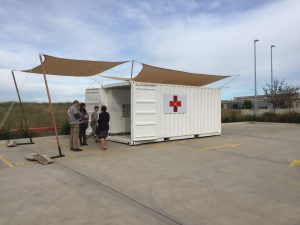
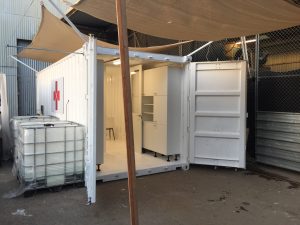
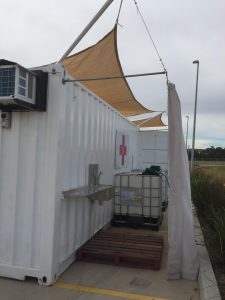
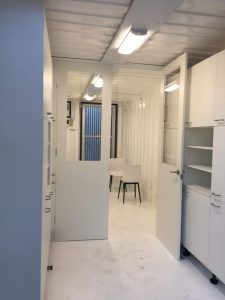
Who’s building these containers? We’re so glad you asked. One of our missions is to provide employment opportunities for those in need. Therefore, the prototype has been built by newly resettled Australians and veterans with marketable skills who need an employment foundation from which to leap. Read the story of part of our crew, Dee and Joe, here.
But this is just the beginning.
Our goal is to raise $30,000 AUD to show the government how easily we can roll out mass testing across Australia, particularly in remote and underserved communities. If we can do it in Australia, we can do it in your community.
The world’s heartbeat pulses within each of us. We belong to each other, and it will take a collective effort to beat COVID-19. At P&G Purpose, we see a post-COVID-19 world where testing stations are abundant and can reach those who face transportation and other barriers to access. We see testing that is representative of the entire community and free from bias. We see testing that is safer for our health care professionals and our neighborhoods.
Do you see it too?
Donate HERE to help us reach our goal and be a part of the vision and the solution.
